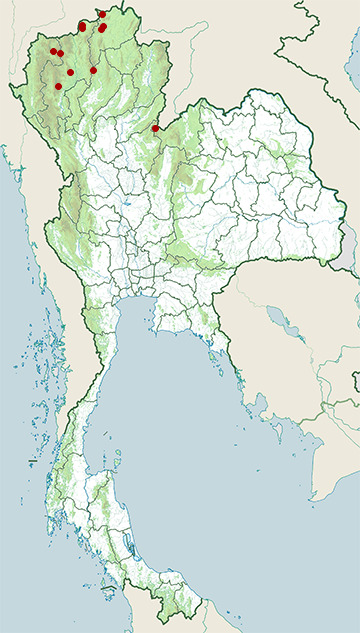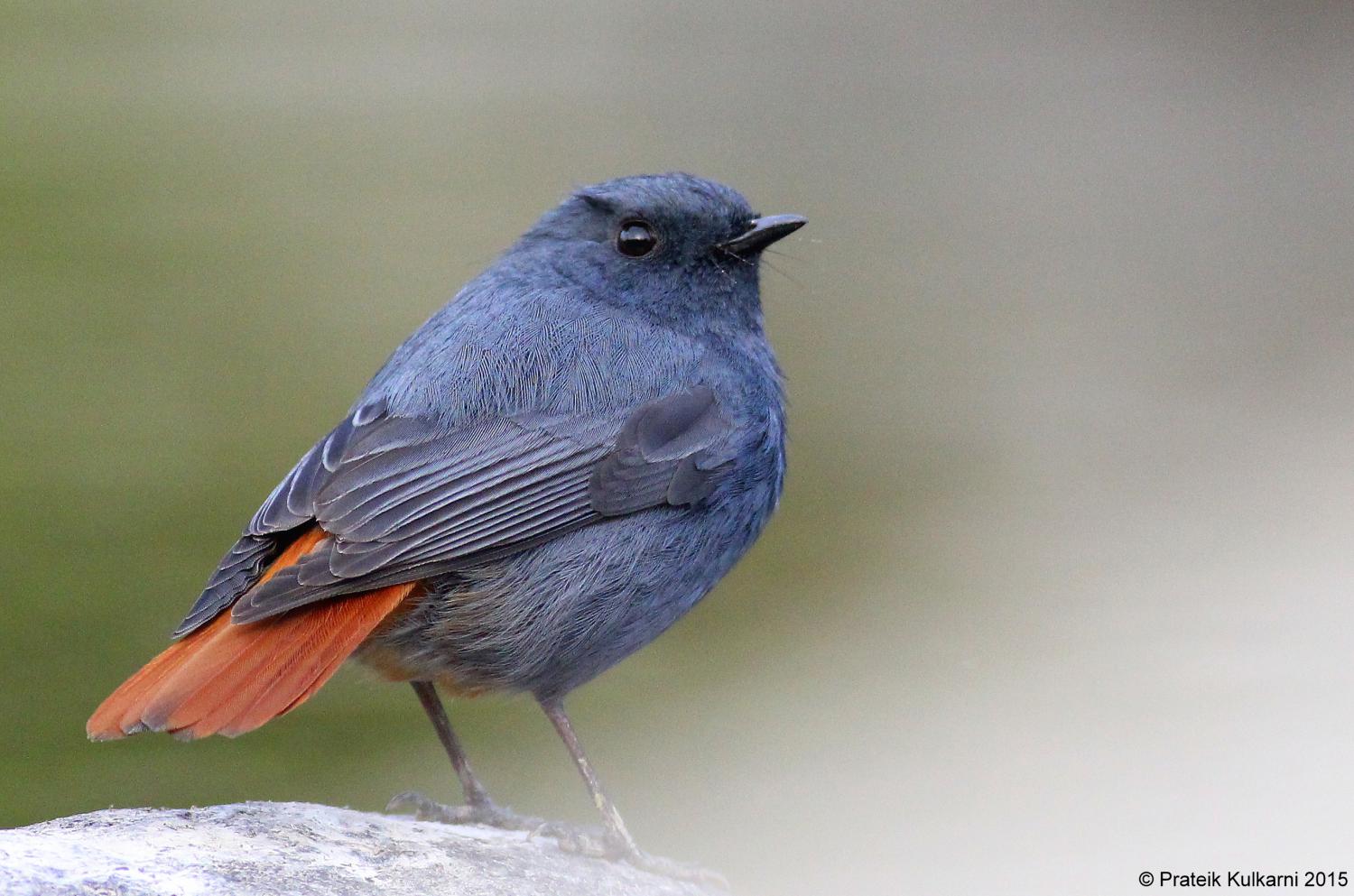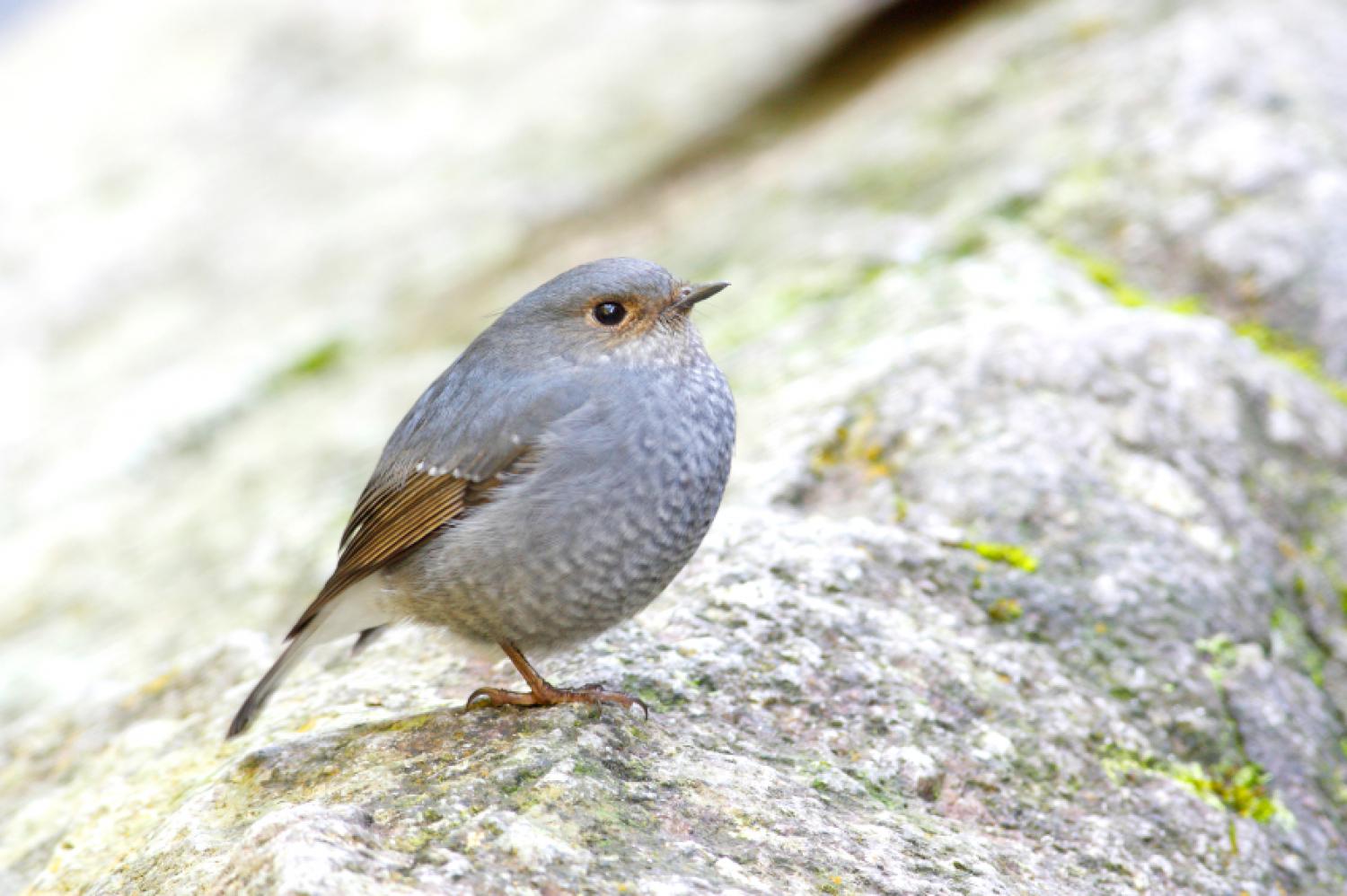Species of Thailand
Plumbeous water redstart
Rhyacornis fuliginosa
Nicholas Aylward Vigors, 1831
In Thai: นกเขนเทาหางแดง
The plumbeous water redstart (Phoenicurus fuliginosus) is a passerine bird in the Old World flycatcher family Muscicapidae. It is found in South Asia, Southeast Asia and China. Males are slate blue in colour, while females are grey. The bird's common name refers to its colour which resembles lead. They tend to live near fast-moving streams and rivers.
Taxonomy
The plumbeous water redstart belongs to the order Passeriformes and the family Muscicapidae. It was previously placed in the genus Rhyacornis but was moved to Phoenicurus based on the results of a molecular phylogenetic study published in 2010. The species consists of two recognized subspecies – Phoenicurus fuliginosus fuliginosus and Phoenicurus fuliginosus affinis. The former was described by Nicholas Aylward Vigors in 1831, while the latter was described by William Robert Ogilvie-Grant in 1906 and is found in Taiwan. In China, the female and first-year male redstarts appear more brown at the top, leading to the possibility of classifying them as a separate race tenuirostris.
Description
The plumbeous water redstart is typically 14 cm long in total, with an average weight of 22 g for males and 18.8 g for females. The male birds are slate blue in colour with a tail that is rusty red. On the other hand, female birds are pale grey and feature a white rump.
Habitat
The bird is found in Afghanistan, Bangladesh, Bhutan, China, India, Laos, Myanmar, Nepal, Pakistan, Taiwan, Thailand, and Vietnam. Their preferred habitats are streams, nullahs and rivers with boulders that are shaded, as well as vegetation near riverbanks. Streams with higher populations of insects such as mayflies appear to be preferred.
They are typically found at relatively high elevations, with the ones living in the Himalayas seen between 2000 m and 4100 m. However, they tend to descend to lower altitudes during the winter.
The plumbeous water redstart has been placed on the Least Concern category of the IUCN Red List, as the population has remained stable throughout the last ten years. The size of its distribution range is over 5100000 km2.
Behavior
The plumbeous water redstart is very protective of its habitat and will be extremely confrontational to any trespasser on its territory. In order to catch flies in rivers, it flies vertically until it is at least 20 above the water, before gliding down in a spiral back to the same place.
This article uses material from Wikipedia released under the Creative Commons Attribution-Share-Alike Licence 3.0. Eventual photos shown in this page may or may not be from Wikipedia, please see the license details for photos in photo by-lines.
Category / Seasonal Status
Wiki listed status (concerning Thai population): Resident and winter visitor
BCST Category: Recorded in an apparently wild state within the last 50 years
BCST Seasonal statuses:
- Non-breeding visitor
- Resident or presumed resident
Scientific classification
- Kingdom
- Animalia
- Phylum
- Chordata
- Class
- Aves
- Order
- Passeriformes
- Family
- Muscicapidae
- Genus
- Rhyacornis
- Species
- Rhyacornis fuliginosa
Common names
- Thai: นกเขนเทาหางแดง
Synonyms
- Rhyacornis fuliginosus
Conservation status

Least Concern (IUCN3.1)
Photos
Please help us review the bird photos if wrong ones are used. We can be reached via our contact us page.
Range Map

- Chae Son National Park
- Doi Inthanon National Park
- Doi Pha Hom Pok National Park
- Doi Suthep - Pui National Park
- Fang District, Chiang Mai
- Huai Nam Dang National Park
- Khun Korn Forest Park
- Lam Nam Kok National Park
- Mae Fa Luang District, Chiang Rai
- Pai District, Mae Hong Son
- Phu Suan Sai National Park




